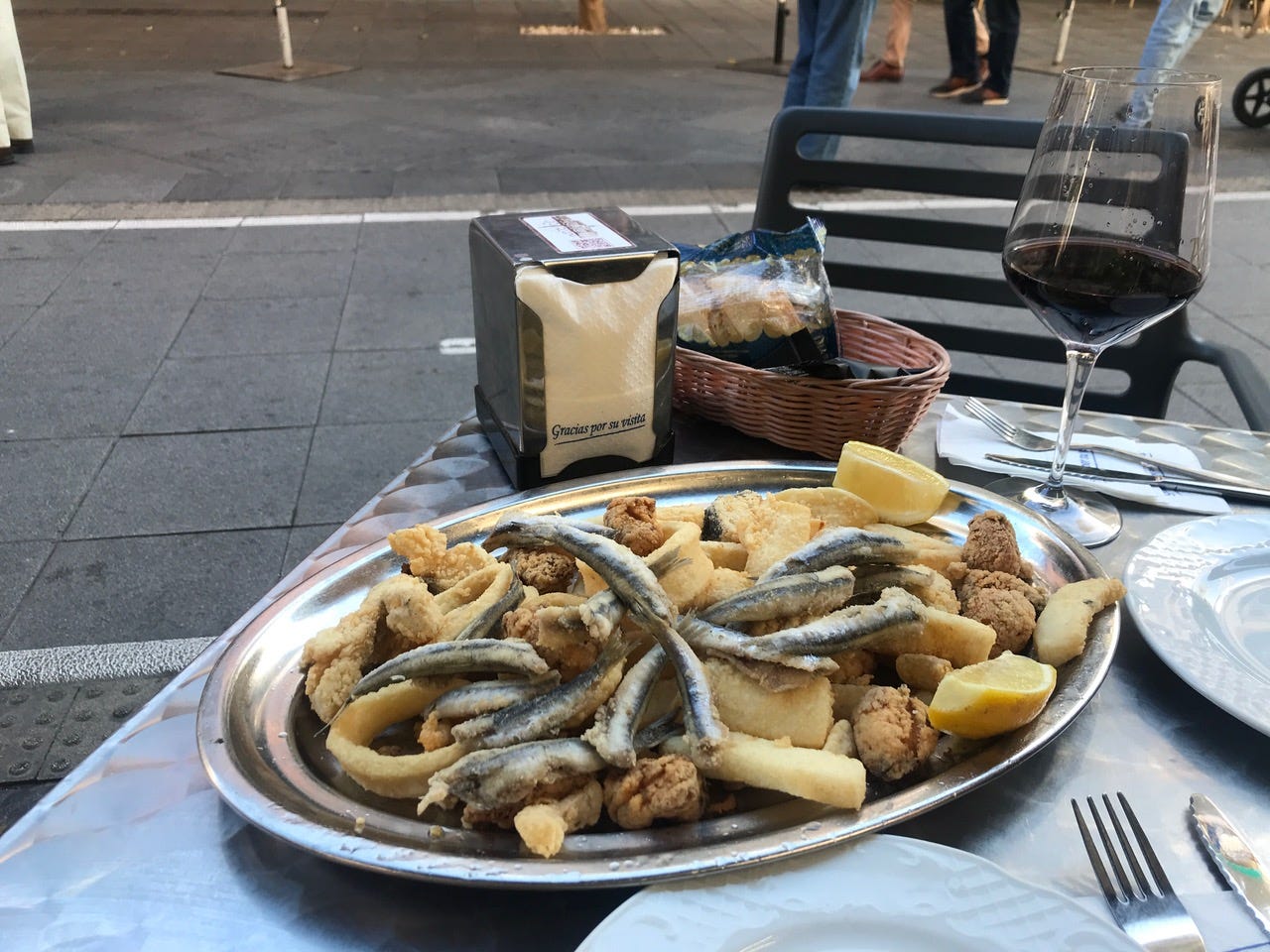Sampling Seville via a free yellow bike
There are times when you can't say no to riding a yellow bike
This bike was definitely screaming taxi-cab yellow.
It was a way too small step-thru for me and only had three speeds. Heftier than a plump chiquita wearing her quinceañera dress, the lineman of a bike was outfitted with a basket on the front, a kryptonite-type lock, and rear flashing light. It also had a metal sign of the hotel in Seville it came from.
What sold me on using it?
It was a free rental included in staying at the friendly El Rey Moro Boutique Hotel (www.elreymoro.com) in the southern Spain city’s narrow and cobblestoned street Santa Cruz section by the Guadalquivir River.
Though Seville (spain.info) is known for its flamenco dances, cathedral, and Real Alcazar palace, it’s also a flat and navigable place on two wheels.
The Andalusian city is Spain’s fourth largest with a metropolitan population of around 1.5 million people. According to the Union Cyclist International, the world governing body of cycling, recognized by the International Olympic Committee, Seville’s transformation from traffic-clogged to bike-friendly metropolis with some 110 miles of bike lanes began about 20 years ago when two cyclists were elected to local government offices. Three years later a poll revealed 90 percent of the public supported a cycling infrastructure for the city. That unleashed a plan starting with 50 miles completed in under two years, usurping about 5,000 parking spaces.
Today, about a third of the population bikes regularly. Almost every household has at least one bike. The city has a ride-share program.
And as I found on my bicycle ride, more than one yellow bike.
It’s easy to get lost in the mazes of the Barrio de Santa Cruz, the old Jewish quarter where we were staying.
When we first got there, it took my wife Jan and I about three minutes to walk down to the nearby gardens of Murillo where a monument to Christopher Columbus stands (the explorer’s remains are contained in the Seville Cathedral, or that of his brother, depending on what you read), and some 27 minutes to get back with all the errant turns we made.
So, when I first learned the hotel had its free loaner bikes, I was a bit apprehensive to try fearing I would venture out and never return. But less than 48 hours later, with a better grip of the local geography and a bike map I had cheekily acquired from a bike rental shop, I had no qualms pedaling out from those gardens for a couple of hours to ride by many of the sights we had already visited. These included the massive cathedral holding Columbus’ tomb with its four pallbearers. I rode in the shadows also of the church’s impressive Giralda bell tower with its 30-plus ramps leading to the 20 or so bells up top and an expansive view of the city.
In that view was the Plaza de Torros de la Maestranza, an 18th century bullring. Though the bull fighting season was over during the November visit, it was possible to tour the facility and enter the massive dirt-floored stadium with its brick bleacher seats. Also from that view was the Torra del Orro, a Moorish tower on the banks of the Guadalquivir. I rode by that tower on that yellow bike, in street clothes and without a helmet like the majority of riders. Not that I wanted to, but the hotel only had two helmets sized small and smaller. I read, oddly, that helmets are not required in Seville, but they are outside the urban area. I heeded the traffic signals for cyclists and stayed in the lanes as hordes of vehicles and pedestrians carried on with life

The highlight of the ride was the pleasant cycling by the river and over the Triana Bridge to the funky Triana district.
Once considered an undesirable place to live, it’s grown to become a thriving destination unto itself that’s a tad arty with an indoor market reminiscent of Boston’s Faneuil Hall. The best was an al fresco bike lane side table for enjoying a satisfying fried fish platter featuring whole anchovies, calamari, cod, and adobo, followed by beer and wine. The adobo is a dogfish marinated in a blend of vinegar, olive oil, paprika, salt, garlic, and pepper. It is a divine creation and a taste of Spain that can also be sampled while on a free yellow bike in the heart of the Mediterranean city.






